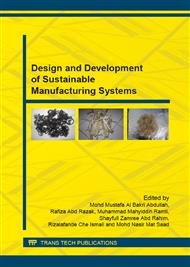p.24
p.29
p.34
p.39
p.44
p.49
p.54
p.59
p.64
Cure Characteristics and Physical Properties of Imperata cylindrica Activated Carbon Filled SMR L Compounding
Abstract:
The potential of activated carbon as a filler in rubber compound has been reviewed .Cure characteristics and physical properties of Imperata Cylindrica activated carbon filled natural rubber of Standard Malaysian Rubber (SMR L) were studied. SMR L was used as the elastomer and the composition of filler loading were varied from 0-50 parts per hundred rubber (phr). A semi-efficient vulcanization system was used throughout the study. The cure characteristics of the rubber compound was determined by using rheometer. The samples of hardness and resilience were measured by durometer shore A and Wallace Dunlop Tripsometer. Cure characteristics showed that cure time, t90 and scorch time,t2 increased as increased filler loading which indicate poor interaction between rubber and filler which slow down the vulcanization time. Minimum torque,ML and maximum torque,MH increased as increased filler loading due to the low processability of the SMR L compounds. Crosslink density and hardness exhibit increment as increased filler loading due to increase rigidity of the SMR L compounds. The resilience will decrease correspondingly as increased in rigidity of the compounds.
Info:
Periodical:
Pages:
44-48
Citation:
Online since:
November 2015
Price:
Сopyright:
© 2015 Trans Tech Publications Ltd. All Rights Reserved
Share:
Citation:


